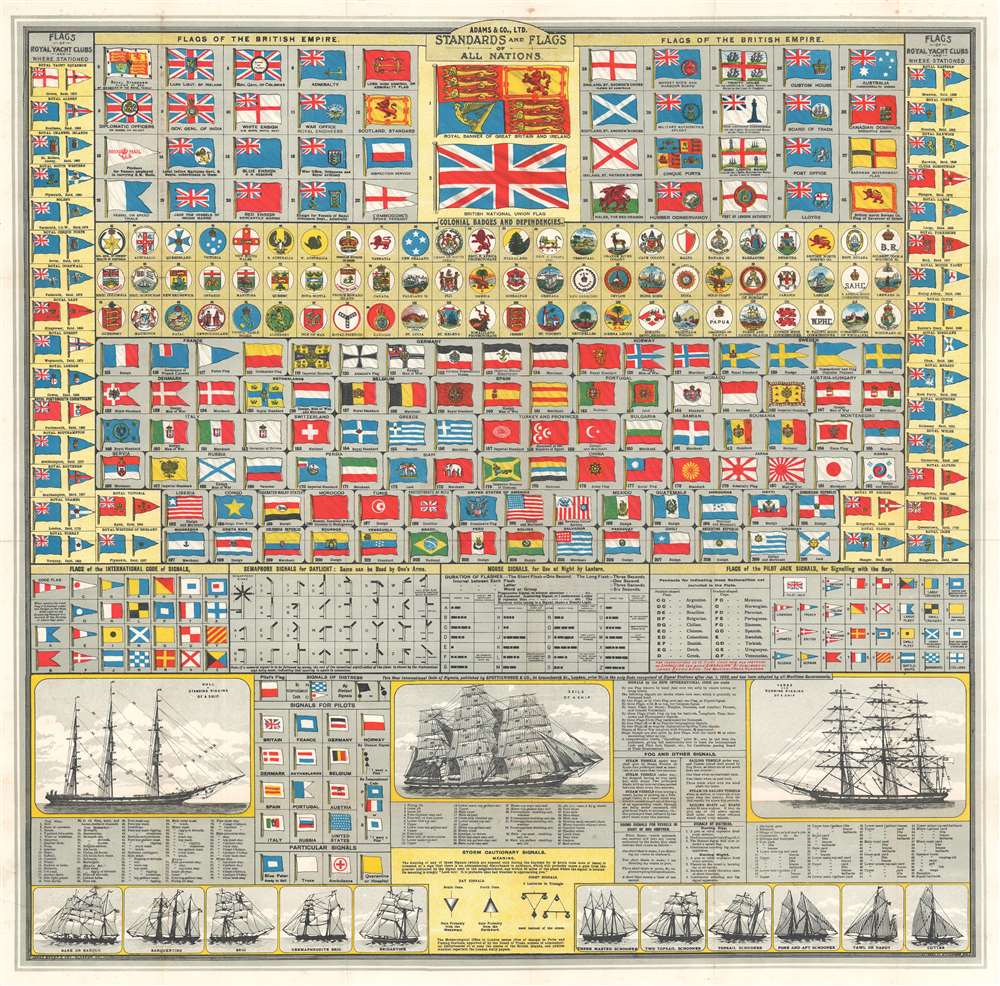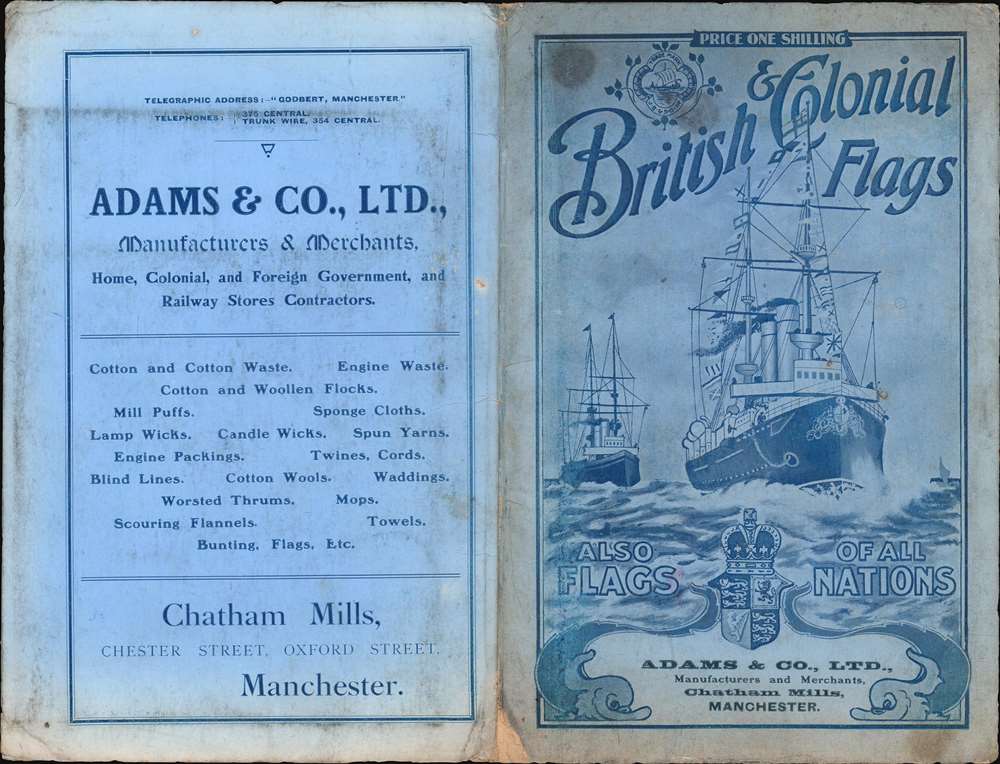1914 Brown Vexillology or Flag Chart of 'All Nations'
StandardsFlags-brown-1914
Title
1914 (undated) 25.5 x 26.25 in (64.77 x 66.675 cm)
Description
Chromolithography
Chromolithography is a color lithographic technique developed in the mid-19th century. The process involved using multiple lithographic stones, one for each color, to yield a rich composite effect. Oftentimes, the process would start with a black basecoat upon which subsequent colors were layered. Some chromolithographs used 30 or more separate lithographic stones to achieve the desired effect. Chromolithograph color could also be effectively blended for even more dramatic results. The process became extremely popular in the late 19th and early 20th centuries, when it emerged as the dominate method of color printing. The vivid color chromolithography produced made it exceptionally effective for advertising and propaganda imagery.Publication History and Census
This chart was published in Glasgow and London by 'Brown Sons and Ferguson' in partnership with Adams and Company. There are multiple editions of this chart issued from about 1900 through World War II published by several different firms. The present chart, with its extensive treatment of ship nomenclature in the lower quadrants, is among the most elaborate of the series. Most examples are undated, but from the accompanying text, we can date this chart to c. 1914.Cartographer
Brown Son and Ferguson (1850 - present) are nautical publishers based in Glasgow, Scotland. The firm was founded around 1850 as a stationer servicing the nautical trade. Their location, near the docks, caused them to focus on nautical matters, printing navigation manuals, nautical charts, logbooks, and more. Founded in 1850 by James Brown, who was soon accompanied by his son Robert Brown, the firm began as a retail stationery business. In 1876, the firm published the first issue of Brown's Nautical Almanac, which was one of its first publications. Commonly known as 'The Sailor's Bible', Brown's Nautical Almanac is published annually and is still published to this day. The only exception was the September 1960 issue, when a fire ravaged the company's offices, including that month's issue of the Almanac. Brown, Son, and Ferguson published the Almanac monthly until December 2011, when Seabreezes Publications on the Isle of Man bought the magazine A history of the firm written by the current management suggest that Ferguson joined firm around 1939, but we have found the 'Brown Son and Ferguson' imprint on charts and other publications that can date no later than 1933. The firm registered as a Limited company in 1921. Decedents of the original founders still run the business from offices in Glasgow. More by this mapmaker...




